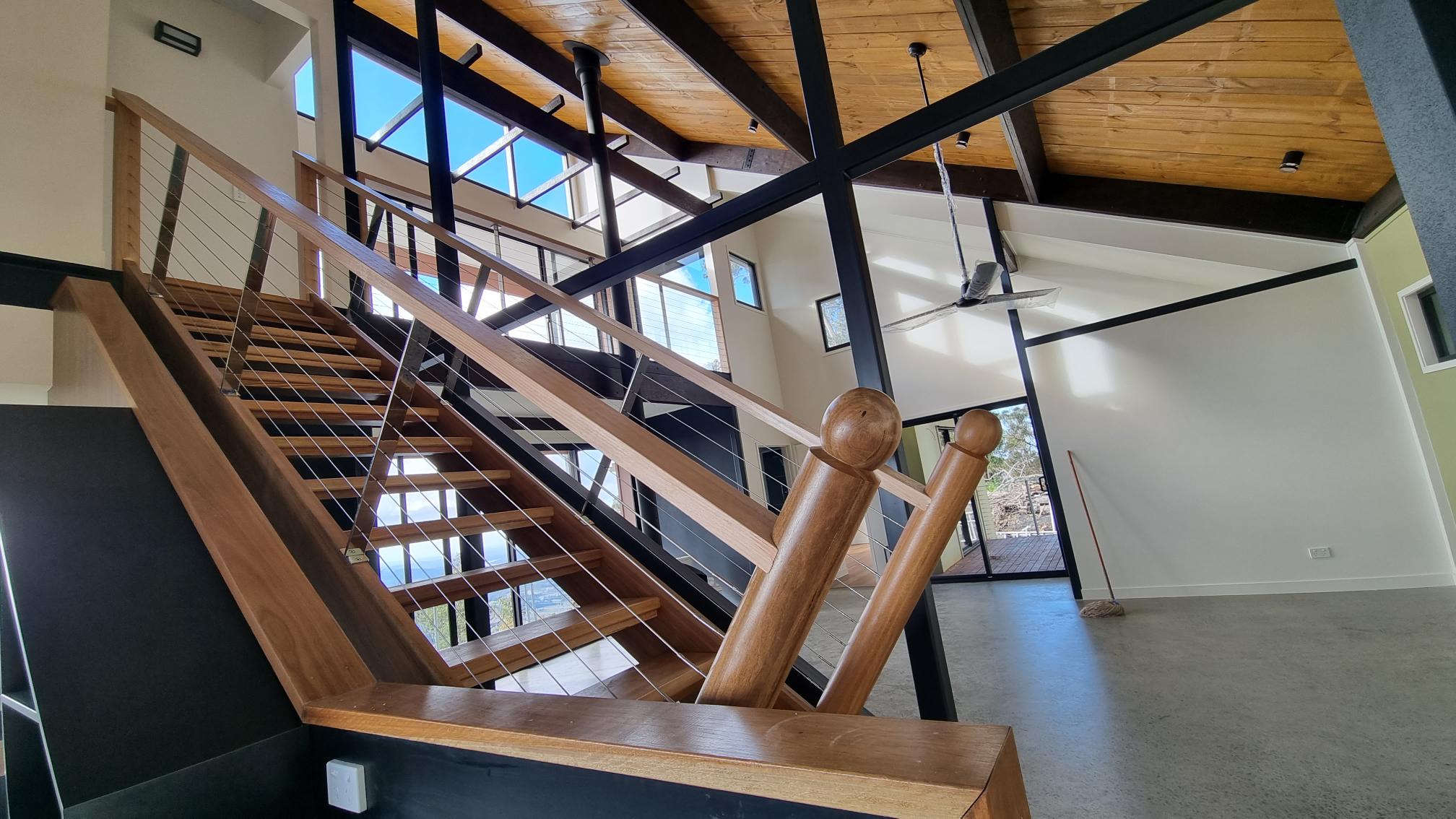Handrails are more than just architectural elements; they are crucial safety features in any building or outdoor space with changes in elevation. When choosing handrail systems, stainless steel wire offers a winning combination of durability, elegance, and crucial safety compliance. In this blog, we’ll delve into the reasons why compliant stainless steel wire handrails matter and explore the legal regulations that govern their design and installation in Australia.
Why Choose Stainless Steel Wire Handrails?
- Aesthetics: Stainless steel wire handrails create a sleek, modern look that complements a wide range of architectural styles. Their minimalist design maximizes views and natural light flow.
- Durability: Stainless steel is exceptionally strong and resistant to corrosion, rust, and weathering. This ensures your handrails will maintain their structural integrity and visual appeal for years to come.
- Low Maintenance: Unlike some materials, stainless steel requires minimal upkeep. A simple cleaning routine will keep your handrails looking their best.
- Safety: Most importantly, stainless steel wire handrails, when installed correctly, provide a secure and reliable barrier to prevent falls and accidents.
The Importance of Compliance
Handrail design and installation in Australia are strictly regulated by the Building Code of Australia (BCA) and relevant Australian Standards (specifically AS 1657 and AS/NZS 1170 series). These standards outline crucial specifications such as:
- Height: Handrails must be at a specific height to offer proper protection.
- Strength and Load-bearing Capacity: Handrails must withstand expected forces without collapsing or deforming.
- Spacing and Design: Wire spacing and overall handrail design must prevent falls and minimize the risk of injury.
- Materials: Only approved materials like stainless steel can be used to ensure durability and safety.
Potential Consequences of Non-Compliance
Using non-compliant handrails poses significant risks:
- Safety Hazards: Substandard handrails may fail, leading to serious falls and injuries.
- Legal Liability: Property owners and builders can face legal action and hefty fines in case of accidents caused by non-compliant installations.
- Insurance Issues: Insurance policies may be invalidated if non-compliant handrails are a factor in an incident.
- Reputational Damage: Businesses associated with non-compliant installations can suffer a loss of trust and future contracts.
Ensuring Your Handrails Are Compliant
- Work with Experienced Professionals: Choose a contractor who specialises in stainless wire mesh and wire rope handrail infills who have a proven track record of delivering compliant handrail infill solutions to the construction industry.
- Demand Quality Materials: Insist on high-grade stainless steel wire and components that meet Australian Standards.
- Request Certification: Obtain documentation from your contractor that certifies the handrails comply with all relevant sections of the BCA and Australian Standards.
Invest in Safety and Peace of Mind
Compliant stainless steel wire handrails aren’t just a legal obligation; they represent a commitment to the safety of everyone who uses your space. By choosing quality materials, experienced professionals, and prioritizing compliance, you gain peace of mind knowing you’ve done everything possible to create a secure and visually appealing environment.
Let us help you with your next project
Jasbem is your trusted source for beautiful, durable, and fully compliant stainless steel wire handrails. Contact us today for a consultation.
Please note: It’s important to consult the Building Code of Australia and relevant Australian Standards for the most up-to-date and comprehensive information on handrail regulations.




